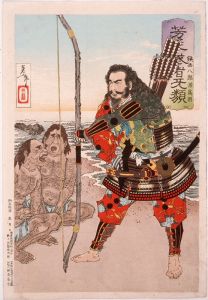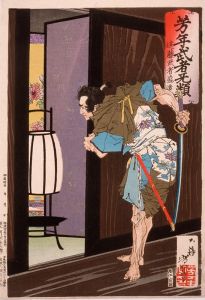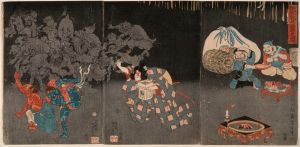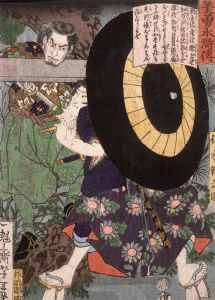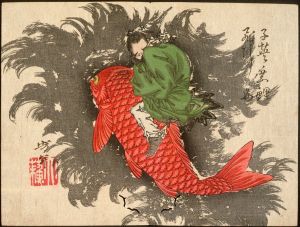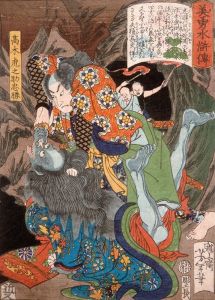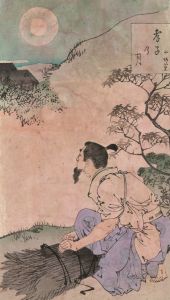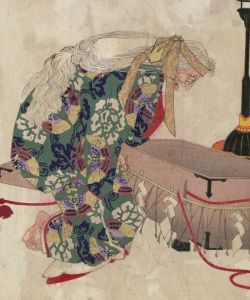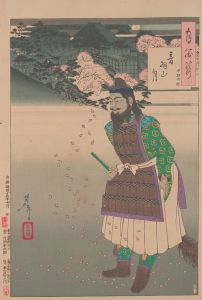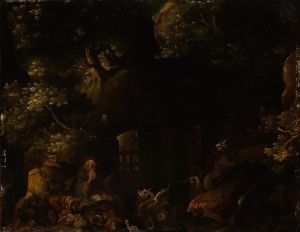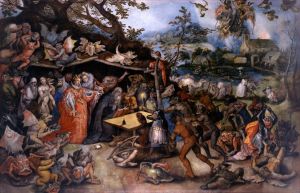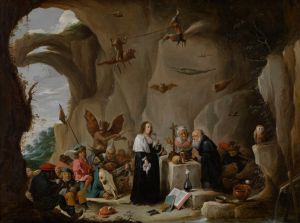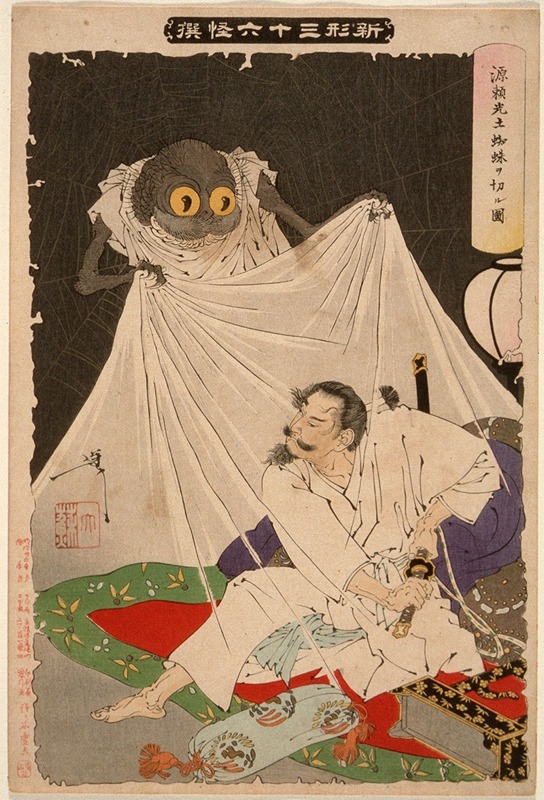
Minamoto no Yorimitsu Cuts at the Earth Spider
A hand-painted replica of Tsukioka Yoshitoshi’s masterpiece Minamoto no Yorimitsu Cuts at the Earth Spider, meticulously crafted by professional artists to capture the true essence of the original. Each piece is created with museum-quality canvas and rare mineral pigments, carefully painted by experienced artists with delicate brushstrokes and rich, layered colors to perfectly recreate the texture of the original artwork. Unlike machine-printed reproductions, this hand-painted version brings the painting to life, infused with the artist’s emotions and skill in every stroke. Whether for personal collection or home decoration, it instantly elevates the artistic atmosphere of any space.
"Minamoto no Yorimitsu Cuts at the Earth Spider" is a woodblock print created by the renowned Japanese artist Tsukioka Yoshitoshi (1839–1892). Yoshitoshi is widely regarded as one of the last great masters of the ukiyo-e tradition, a genre of Japanese art that flourished during the Edo period. This particular work is part of Yoshitoshi's series "New Forms of Thirty-Six Ghosts" (Shinkei Sanjūrokkaisen), which was published between 1889 and 1892. The series depicts supernatural tales, folklore, and historical legends from Japanese culture.
The print illustrates a famous episode from Japanese folklore involving Minamoto no Yorimitsu (also known as Raikō), a legendary samurai of the Heian period (794–1185). In the story, Yorimitsu confronts and defeats the Earth Spider (tsuchigumo), a mythical creature often portrayed as a symbol of chaos or rebellion against the established order. The Earth Spider is a recurring figure in Japanese mythology and literature, frequently depicted as a monstrous spider capable of casting illusions and ensnaring its victims.
In Yoshitoshi's depiction, Yorimitsu is shown in the act of striking the Earth Spider with his sword, surrounded by a dramatic and dynamic composition. The print captures the tension and energy of the moment, with Yorimitsu's determined expression and the spider's sprawling limbs emphasizing the intensity of the battle. Yoshitoshi's use of vivid colors, intricate details, and bold lines exemplifies his mastery of the ukiyo-e style, while also reflecting his innovative approach to storytelling and composition.
This work is notable not only for its artistic qualities but also for its cultural significance. It draws on themes of heroism, the struggle between order and chaos, and the supernatural, which were popular in Japanese art and literature of the time. Yoshitoshi's ability to blend traditional motifs with his own unique artistic vision has made this print, along with others in the series, a celebrated example of late ukiyo-e art.
Today, "Minamoto no Yorimitsu Cuts at the Earth Spider" is recognized as an important piece in the study of Japanese art history. It is often displayed in exhibitions and collections that focus on Yoshitoshi's work or the broader ukiyo-e tradition. The print serves as a testament to Yoshitoshi's enduring legacy and his contribution to the preservation and evolution of Japanese visual storytelling.





